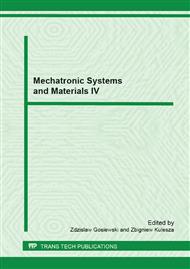p.651
p.657
p.663
p.669
p.675
p.681
p.686
p.692
p.698
The Parametric Optimization of Structure Mass of Swept Wing in Compliance to Stiffness and Strength Boundary Conditions
Abstract:
The paper presents the method suitable for optimization of parameters and applied to design aircraft subassemblies on the example of a swept wing. It outlines the assumptions that are necessary to develop a mathematical model and describes constraints that served as the basis to develop an algorithm and describe the corresponding procedures in the GRIP (Graphics Interactive Programming) language that is a part of the CAD/CAM/CAE Unigraphics system. The further part of the study comprises discussion how the wing parameters and the mass functional are affected by rigidity constraints and strength constraints. The algorithm for designing of aircraft components was finally developed with inputs to the multi-criteria design process Web Modelling [ of an aircraft body. The study also included initial assumptions to algorithms originally developed by the author and dedicated to modelling of components incorporated into aircraft structures.
Info:
Periodical:
Pages:
692-697
Citation:
Online since:
March 2013
Authors:
Price:
Сopyright:
© 2013 Trans Tech Publications Ltd. All Rights Reserved
Share:
Citation:


